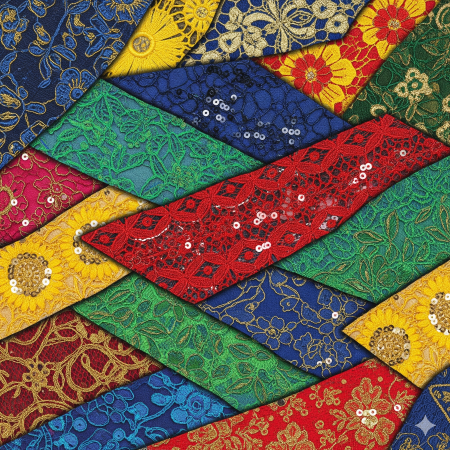The Rise of K-pop and Anime in Africa: A Socio-Economic Bridge To the East

A Pop Culture Bridge Between Continents
The popularity of K-pop and anime in Africa signals a vibrant cultural exchange that connects continents and fosters new partnerships, migration flows, and economic opportunities. What started as niche entertainment has grown into a transcontinental relationship—powered by passionate fanbases, strengthened by migration, and advanced through education and trade.
Across the continent, particularly in Nigeria, South Africa, and Kenya, Korean pop music and Japanese animation have been embraced with creativity and enthusiasm. This is not just about consumption. It represents a reimagining of global pop culture through African perspectives.
K-Drama and K-pop’s Sonic Boom in Africa
Image Credit: Okay Africa
K-pop's rise in Africa has been dramatic. Though its early spread came via YouTube and social media, the level of youth engagement in places like Nigeria and South Africa reveals a deeper resonance.
In Nigeria, K-pop is now a cultural fixture. The country ranks among the top three markets for K-pop in Sub-Saharan Africa, with global acts like BTS, EXO, and BLACKPINK attracting huge followings. Digital platforms have allowed Nigerian fans to livestream concerts, learn choreography, and interact directly with Korean idols.
Institutions such as the Korean Cultural Centre (KCC) in Abuja play an important role. They offer language and dance classes, and host local qualifiers for the global K-pop World Festival. Groups like Supreme Task and Pacific Starz have even represented Nigeria internationally, blending African talent with Korean pop artistry.
In South Africa, K-pop is even more deeply rooted. It is the largest K-pop market in the region. South African fans often engage with the full spectrum of the Hallyu wave, including fashion, food, K-dramas, and beauty. K-Culture festivals, K-drama screenings, and K-food tastings show how this cultural phenomenon has become fully immersive.
Anime: From Cartoons to Cosplay Communities
Image Above: Naruto. Image Credit: Netflix
Anime in Africa shares a similar journey but with a distinct history. Initial exposure came through local TV in the late 20th century. Shows like Voltron, Samurai X, Dragon Ball Z, and Narutosparked early interest, long before streaming made anime widely accessible.
In Nigeria, anime fandom is thriving. Events such as the Èkó Anime Fest have grown into regional attractions, drawing visitors from Ghana, Kenya, and South Africa. These gatherings feature not just screenings and cosplay, but also panels with local manga artists and voice-over talent.
Image Credit: Eko Anime Fest
South Africa's anime community is close-knit and active. Organizations like AnimeFanatika have been around for over a decade, organizing regular fan events, cosplay contests, and discussion meetups. Anime in this context is more than entertainment—it is a medium of identity and personal expression.
Fan-driven creativity is booming as well. Across African cities, artists are creating anime-style illustrations, launching YouTube channels, and even developing Afro-anime stories that merge Japanese techniques with African narratives.
Migration to Japan: Quiet Growth and Cultural Roots
Image Above: Heruy and Lij Araya Abeba of Ethiopia, circa 1934 in Japan. Credit: Kaleidoscope of Books.
Cultural interest has also led to migration. Since the 1980s, African migration to Japan has grown gradually, starting with Ghanaians and expanding to include Nigerians, Senegalese, and Cameroonians.
By 2022, Japan’s Ministry of Justice reported around 21,000 African residents, with Nigeria and Ghana forming the largest communities. Most migrants entered on student or trainee visas, settling in urban hubs like Tokyo, Osaka, and Nagoya.
The Nigerian population alone grew from a few hundred in the 1980s to over 2,400 by 2005, and nearly 4,000 by 2023.
Japan welcomed its first African trainee—a Nigerian, in 1960. By 1990, there were over 2,000 Africans in the country, with Nigerians, Ghanaians, and Egyptians forming the core. By 2011, the Sub-Saharan population had surpassed 9,800, with Nigerians and Ghanaians leading.
Support networks such as the Nigerian Union in Japan and Imo State Union Japan have helped newcomers adjust, offering social support and guidance in navigating Japan’s strict immigration system. Many migrants initially worked in nightlife or trade before branching into business and professional sectors.
Migration to South Korea: Gradual Expansion
Image Credit: Okay Africa
African migration to South Korea began later, around the early 1990s. Entry was difficult due to restrictive immigration policies that prioritized workers from treaty nations, which excluded most African countries.
Despite the barriers, theAfrican entry numbers in Korea exceeded 20,000 by 2019. Most migrants, often male, formed trade networks that linked African and Korean markets—especially in electronics, cosmetics, and textiles.
These communities became unexpected ambassadors of African culture. Through informal economies, education exchanges, and everyday interactions, they played a role in shifting Korean perceptions and laying the groundwork for deeper ties.
One of the most well-known Black figures in South Korea is Sam Okyere, a TV personality originally from Ghana.
He first arrived in the country in 2009 on a scholarship to study computer science. Later shifting into the entertainment world, he has used his platform to promote cross-cultural understanding and challenge perceptions of Black people in Korean society.
Economics: Trade, Development, and Opportunity
Image Above: Minister Song Miryung and AfDB President Akinwumi Adesina. Credit: Business Day Nigeria
Trade between Africa and both Japan and South Korea has intensified, driven by complementary economic needs.
By 2021, Japan’s trade with Africa reached $23.5 billion, centered on machinery, transport equipment, and natural resources. Japanese companies are actively investing in infrastructure, energy, and automotive manufacturing throughout East and West Africa.
Japan’s Tokyo International Conference on African Development (TICAD), launched in 1993, remains a key platform for diplomacy. Unlike traditional aid models, TICAD emphasizes mutual growth and private-sector engagement.
South Korea, meanwhile, has taken a more urgent approach. At the 2024 Korea-Africa Summit, nearly 50 bilateral agreements were signed. These targeted critical minerals like cobalt, lithium, and manganese—essential for Korea’s battery and semiconductor sectors.
Korea pledged $10 billion in development assistance and $14 billion in export financing over six years, signaling a long-term strategic focus on African partnerships.
Education and Cultural Diplomacy: Building Bridges Through Scholarships

Image Credit: Ubuy Nigeria
Education remains a cornerstone of African engagement with both Japan and South Korea. Japan’s MEXT Scholarship program has provided full funding for African students since the 1990s, covering undergraduate, graduate, and technical studies. Universities like Doshisha and Kyoto University host African scholars who return home with deep ties to Japan.
The ABE Initiative, started in 2014, aims to train future African leaders in Japanese systems, industries, and governance models—blending education with diplomacy.
South Korea offers similar opportunities. Government scholarships and university partnerships target African students in fields like engineering, public policy, and development studies. These programs not only strengthen African institutions but also help Korean universities build international reputations.
For many African students, these scholarships are more than academic opportunities. They offer entry into broader cultural, professional, and diplomatic spheres.
Conclusion: A New Kind of Global Partnership
Image Credit: But Why Tho
The growing popularity of K-pop and anime in Africa reflects a broader cultural shift. These are not isolated trends, but symbols of a deeper, multi-dimensional connection—linking pop culture, migration, education, and economic cooperation.
African migration to Japan and South Korea has steadily increased since the late 20th century. Community organizations, educational pathways, and changing visa systems have supported these transitions. On the economic front, trade, investment, and shared industrial goals are redefining how these Asian nations engage with the African continent.
Culturally, fan communities and festivals—like Èkó Anime Fest and K-Culture Nights—continue to build mutual understanding. Education and soft diplomacy add further depth to these ties.
Africa’s role in the global cultural economy is rising. The embrace of Japanese and Korean culture is both a reflection of this momentum and a catalyst for what comes next.
You may also like...
Super Eagles' Shocking Defeat: Egypt Sinks Nigeria 2-1 in AFCON 2025 Warm-Up

Nigeria's Super Eagles suffered a 2-1 defeat to Egypt in their only preparatory friendly for the 2025 Africa Cup of Nati...
Knicks Reign Supreme! New York Defeats Spurs to Claim Coveted 2025 NBA Cup

The New York Knicks secured the 2025 Emirates NBA Cup title with a 124-113 comeback victory over the San Antonio Spurs i...
Warner Bros. Discovery's Acquisition Saga: Paramount Deal Hits Rocky Shores Amid Rival Bids!

Hollywood's intense studio battle for Warner Bros. Discovery concluded as the WBD board formally rejected Paramount Skyd...
Music World Mourns: Beloved DJ Warras Brutally Murdered in Johannesburg

DJ Warras, also known as Warrick Stock, was fatally shot in Johannesburg's CBD, adding to a concerning string of murders...
Palm Royale Showrunner Dishes on 'Much Darker' Season 2 Death

"Palm Royale" Season 2, Episode 6, introduces a shocking twin twist, with Kristen Wiig playing both Maxine and her long-...
World Cup Fiasco: DR Congo Faces Eligibility Probe, Sparks 'Back Door' Accusations from Nigeria

The NFF has petitioned FIFA over DR Congo's alleged use of ineligible players in the 2026 World Cup playoffs, potentiall...
Trump's Travel Ban Fallout: African Nations Hit Hard by US Restrictions

The Trump administration has significantly expanded its travel restrictions, imposing new partial bans on countries like...
Shocking Oversight: Super-Fit Runner Dies After Heart Attack Symptoms Dismissed as Heartburn

The family of Kristian Hudson, a 'super-fit' 42-year-old marathon runner, is seeking accountability from NHS staff after...
.png&w=1920&q=75)






